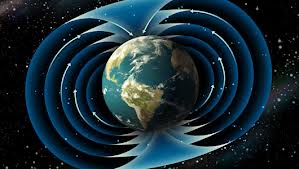
This winter Toronto sightseeing will have some added night-time attractions. Due to a recent solar flare, the beautiful Aurora Borealis, more commonly known as the Northern Lights, will be visible as far south as the Canadian-United States border, lighting up cities like Toronto with its beautiful colors. Most of the time, the beauty of the Northern lights is reserved for those who live close to the Arctic Circle, but now, the sight of the lights will travel South leaving many first-time-witnesses to wonder, “What are the Northern Lights and how do they work?”
Typically, the lights appear in an oval shape, called an aurora oval, covering the Arctic and Antarctic circles, but occasionally with increased sun activity, the lights can be seen farther south. This week scientists observed a large solar eruption from a giant sunspot as it faced the Earth’s surface. The solar storm is emitting large amounts of electrically charged particles that are now making their way to Earth. While they aren’t dangerous, they can affect satellite activity and may cause the Northern Lights to be visible far outside the Arctic Circle, becoming a new highlight for Toronto, Canada attractions.
The Northern Lights, and its counterpart the Southern Lights, have been drawing people to the poles every year to see the night sky come alive. But what is the origin of these lights, and why do they happen at the poles? These lights occur when highly charged electrons leave the sun and are carried by a solar wind to contact with earth’s atmosphere. These electrons are traveling at a speed of 1 million miles an hour, and when they approach the earth, they are pulled along the lines of the magnetic field that is generated by the Earth’s spin. These magnetic fields converge at the magnetic north and south poles, creating a magnetosphere, an area of highly charged magnetic and electric fields.
As the electrons flow through this teardrop- shaped area and enter Earth’s upper atmosphere, they begin to collide with oxygen and nitrogen atoms, producing the beautiful colors that adorn the night sky. The color that results varies by the type of atom and the altitude at which the electrons and atoms collide. At 150 miles in altitude, the electrons will collide with oxygen, producing red and green colors. At 60 miles in altitude, the electrons meet nitrogen and create blue and even purple colors.
The dance of these colors across the sky is caused by the shifting magnetic and electric forces, creating atmospheric currents. These currents can be over 50,000 volts, more than 400 times the voltage in a typical electrical outlet.
The strength of the Northern Lights usually fluctuates based on the sun’s activity, but it usually follows an 11 year cycle. However, with the recent increase in sun activity, those in cities like Toronto, Montreal, Edmonton, Halifax, and Duluth may get some unseasonal exposure.
These Northern Lights can be breathtaking to see, but remember that you will want to drive away from city lights and allow your eyes to adjust to the darkness. The bright lights of the city and car lights can block out the Northern Lights just like they do the stars. Turning off your light sources, like a flashlight or your phone’s LED screen will help your eyes adjust so they can see the more subtle colors. You can turn North, but when the lights are bright, they will cover the sky. Look up and if you’re lucky, you’ll see those beautiful lights dance across the sky.



